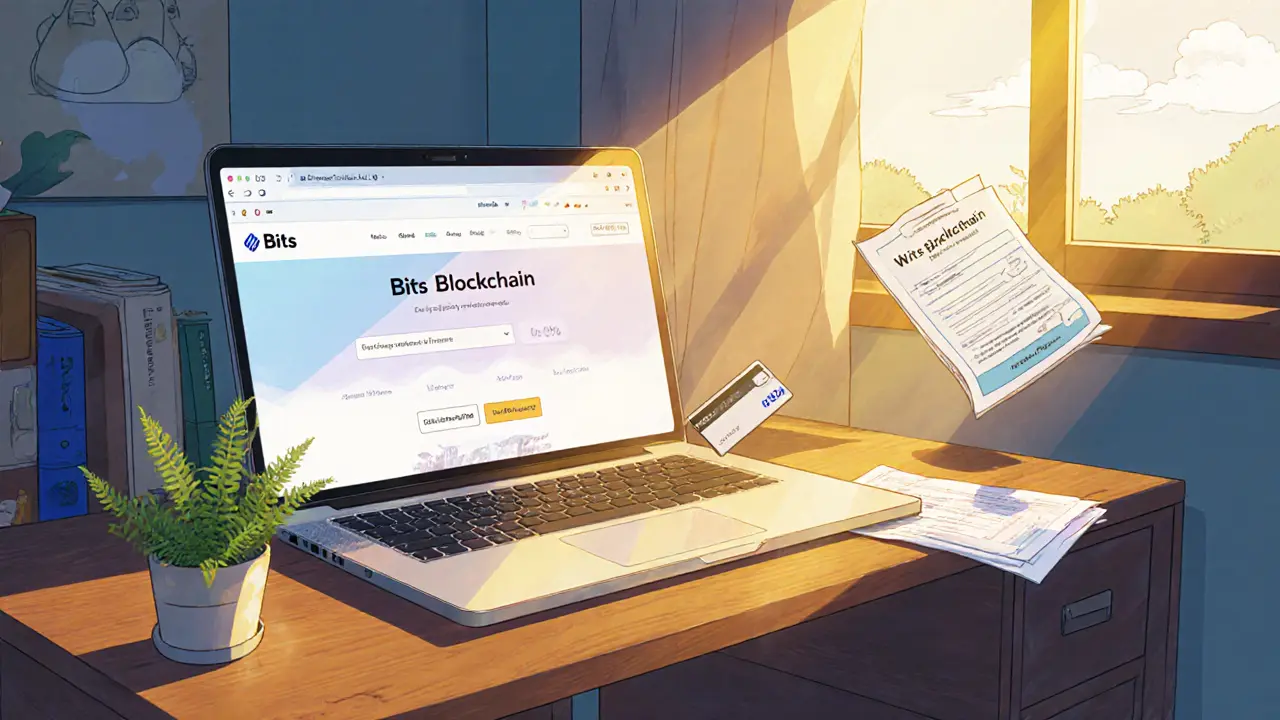Quick Takeaways
- OKX and Bybit dominate global volume but face regulatory headwinds.
- Kraken offers the strongest security and institutional tools.
- Coinbase shines on usability, yet its fees are the highest among the majors.
- Gemini leads on compliance, but limits coin selection.
- Decentralized exchanges such as Uniswap and PancakeSwap provide true self‑custody at the cost of higher slippage.
If you’re hunting for a platform that balances safety, cost, and feature set, this review breaks down the data you need to decide.
2025 Crypto Exchange Landscape - What Changed?
The market has settled after the 2022‑23 “crypto winter.” According to TokenMetrics, roughly 37% of exchanges vanished, leaving only those with solid security, clear compliance, and sustainable revenue. Daily global volume sits around $28.7billion, with the top ten exchanges handling 78.3% of it (CoinMarketCap, Sep2025).
Two forces shape today’s ecosystem:
- Regulatory pressure - The EU’s MiCA framework went fully live in June2024, forcing exchanges to obtain licenses or risk being barred from the continent.
- Security maturity - Proof‑of‑reserves reports and multi‑layer authentication have become baseline expectations, not nice‑to‑have extras.
How We Score a "Balanced" Exchange
Our rubric weighs five pillars that matter to both retail and institutional users:
- Security track record - Breach history, audit frequency, and reserve verification.
- Regulatory compliance - Licenses, KYC/AML processes, and jurisdictional approvals.
- Fee structure - Maker/taker rates, withdrawal costs, and hidden charges.
- Feature set - Spot, futures, margin, staking, API depth, and mobile app quality.
- User experience - Onboarding time, support responsiveness, and community resources.
Each exchange receives a score out of 100, with a balanced platform hitting at least 75 on all pillars.
Exchange Spotlights
OKX is a global centralized exchange offering 675 trading pairs, 0.08% maker and 0.10% taker fees for spot, and 0.02%/0.05% for futures. It holds a perfect 10/10 Trust Score on CoinGecko and publishes monthly proof‑of‑reserves confirming 100% backing of user funds.
Kraken is a U.S.-based exchange with over 350 assets, tiered fees from 0% to 0.4%, and a 9.8/10 security rating from NerdWallet. It’s renowned for 24/7 live chat (average response 47seconds) and hardware‑key authentication.
Coinbase is a American platform supporting 235 cryptocurrencies, offering a simple “buy‑crypto” UI and an advanced trading slice with 0.50% taker fees. While user‑friendly, its taker rates can climb to 3.99% on the basic interface.
Bybit is a fast‑growing exchange with 680 pairs, mirroring OKX’s futures fees but still recovering from a $1.4billion breach in Feb2025. It secured a MiCA license in Austria in May2025, yet remains restricted in the U.S.
Gemini is a NYDFS‑regulated exchange focusing on compliance, offering 73 coins with fees between 0.5% and 3.49%. It’s praised for security but criticized for limited asset coverage.
Uniswap V3 is a decentralized exchange on Ethereum providing automated market‑making with an average slippage of 1.2% on typical swaps. Users retain full custody but must manage gas fees and wallet connections.
PancakeSwap V3 is a BSC‑based DEX handling $4.03billion in 24‑hour volume, offering lower transaction fees but exposing traders to Binance Smart Chain’s occasional congestion.

Side‑by‑Side Comparison
| Exchange | Daily Volume (B$) | Spot Fee (Maker/Taker) | Futures Fee (Maker/Taker) | Security Rating | Regulatory Status |
|---|---|---|---|---|---|
| OKX | 4.2 | 0.08% / 0.10% | 0.02% / 0.05% | 10/10 | US‑compliant (post‑settlement), MiCA‑licensed |
| Kraken | 3.1 | 0%‑0.26% (tiered) | 0.03% / 0.07% | 9.8/10 | US‑regulated, EU‑MiCA applicant |
| Coinbase | 2.8 | 0%‑3.99% (simple UI) | 0.45% / 0.50% (advanced) | 9.2/10 | US‑registered, EU‑MiCA compliant |
| Bybit | 3.8 | 0.08% / 0.10% | 0.02% / 0.05% | 8.5/10 (post‑hack recovery) | MiCA‑licensed, US‑restricted |
| Gemini | 1.4 | 0.5%‑3.49% | N/A | 9.5/10 | NYDFS‑regulated, EU‑MiCA pending |
Who Should Use Which Exchange?
Beginners - Coinbase’s intuitive UI and fast onboarding (≈1.5hours) make it the low‑effort choice, provided you accept higher taker fees.
Security‑first traders - Kraken scores top on audit depth, offers hardware‑key login, and provides extensive API docs for algorithmic strategies.
High‑frequency/futures enthusiasts - OKX and Bybit deliver sub‑0.1% taker fees and deep order‑book liquidity, though you’ll need to navigate their compliance processes.
Compliance‑driven institutions - Gemini’s NYDFS charter and robust AML controls satisfy most regulators, albeit with a narrower coin list.
Self‑custody advocates - Uniswap and PancakeSwap let you trade without handing over private keys, but expect higher slippage and a learning curve around gas management.
Security & Compliance Deep Dive
All five centralized platforms publish proof‑of‑reserves, yet the methodology varies. OKX releases audited snapshots every month, while Kraken shares quarterly audits audited by a Big‑Four firm. Bybit’s post‑hack report detailed upgraded hot‑wallet segregation, but independent verification is still pending.
Regulatory footprints differ sharply. MiCA licenses (OKX, Bybit) grant passporting across the European Economic Area, boosting European user confidence. Gemini’s NYDFS charter has become a de‑facto badge for U.S. investors, but the exchange still lacks a full futures offering.
For DEXs, security is user‑driven. Uniswap’s smart contracts have undergone multiple audits, yet the “code is law” nature means any bug can instantly affect all liquidity pools.
Fees, Liquidity & Trading Features
Fee structures are tiered by 30‑day volume. Retail users under $10k/month typically pay the published base rates; high‑volume traders enjoy sub‑0.02% taker fees on OKX and Bybit.
Liquidity depth matters for large orders. OKX’s order book depth averages $1.2billion per pair, while Binance’s competitor (not covered here) sits slightly higher. DEXs suffer from fragmented liquidity - Uniswap V3’s average slippage of 1.2% contrasts with 0.3% on centralized venues.
Feature wise, Kraken offers margin (up to 5x), futures, staking, and a dedicated “Prime” suite for institutions. Coinbase has launched FairX futures, but the UI remains less flexible than OKX’s “Advanced” panel.
User Experience, Support & Community
Onboarding speed is a practical metric. Coinbase averages 1.5hours from app download to first trade; Kraken takes about 2.5hours due to stricter KYC. Bybit’s post‑hack verification flow added ~30minutes.
Support quality is starkly different. Kraken’s 24/7 live chat resolves tickets in under a minute on average, while Coinbase’s email support can lag 12‑18hours. Community hubs (Discord, Reddit, Telegram) are most active for Kraken and Coinbase, each boasting >150k members.
Educational resources vary. Coinbase provides short video guides, whereas Gemini’s library focuses on compliance and tax reporting. Bybit’s academy includes advanced derivatives tutorials, catering to experienced traders.
Emerging Trends & Future Outlook
Three trends will shape the next two years:
- On‑chain analytics integration - 65% of top exchanges now embed real‑time blockchain metrics to enhance order‑book transparency.
- Tokenized real‑world assets - Both Coinbase and Kraken piloted tokenized stocks and commodities in Q32025, hinting at a broader move toward hybrid finance.
- Consolidation via acquisitions - Smaller players are being bought out as compliance costs climb; expect at least two major mergers before 2027.
Regulatory fragmentation remains the biggest risk. CEOs of 78% of exchanges cite inconsistent global rules as their top challenge, meaning platform availability may shift as new licenses are granted or revoked.
Next Steps - Picking Your Exchange
1. List your primary goals - security, low fees, or easy onboarding.
2. Match those goals to the profiles above.
3. Open a test account on two shortlisted platforms; try a $100‑worth trade to gauge UI and support responsiveness.
4. Enable two‑factor authentication immediately; consider a hardware key if you plan to hold >5BTC.
By following this checklist you’ll avoid the common pitfalls that trap newcomers - hidden fees, slow verification, and weak security.
Frequently Asked Questions
Which exchange has the lowest fees for spot trading?
OKX and Bybit both list 0.08% maker and 0.10% taker fees for spot trades, making them the cheapest of the major centralized platforms. Kraken can go lower for high‑volume users, but the base rates are higher for most retail traders.
Is a centralized exchange safer than a DEX?
Centralized exchanges typically offer custodial protection, insurance funds, and regular audits, which reduce the risk of losing funds due to smart‑contract bugs. However, they become targets for hacks and require users to trust the provider. DEXs give you full control of private keys, but you’re responsible for every security step and you face higher slippage.
Do I need to verify my identity to trade on all exchanges?
Most regulated platforms - OKX, Kraken, Coinbase, Gemini - require KYC/AML verification before you can withdraw or trade beyond a small limit. Uniswap and PancakeSwap don’t ask for any personal data because they are non‑custodial.
Can I use the same exchange for both retail and institutional trading?
Kraken’s "Prime 2.0" and Coinbase’s FairX platform are built to serve retail users as well as hedge funds, offering APIs, sub‑millisecond execution, and dedicated account managers.
What should I look for in an exchange’s security model?
Key signals are: regular third‑party audits, proof‑of‑reserves transparency, multi‑factor authentication, cold‑wallet percentage, and insurance coverage for potential breaches.








Jennifer Bursey
August 28, 2025 AT 19:53 PMWhen you stack up fee structures against security depth, the ledger shows a clear hierarchy. OKX’s 0.08% maker fee looks seductive, but the audit cadence and monthly proof‑of‑reserves give it a resiliency score that outpaces most rivals. Bybit chased the same fee tier after its February breach, yet its post‑hack hot‑wallet segregation still trails Kraken’s hardware‑key login. For institutional desks, the compliance passporting under MiCA for OKX and Bybit translates to a smoother regulatory onboarding pipeline, while Gemini’s NYDFS charter provides the U.S.‑centric trust badge. If you value a blend of low‑cost execution and audit transparency, the sweet spot lands on OKX for spot trading and Kraken for the security‑first narrative. Remember, the fee‑only equation ignores latency, order‑book depth, and the occasional hidden withdrawal surcharge, so run a $100 test‑trade on both before committing large capital.
Overall, the balanced approach is to diversify – leverage OKX for high‑frequency volume, Kraken for custodial confidence, and keep a DEX like Uniswap for pure self‑custody experiments.
Tayla Williams
September 5, 2025 AT 22:20 PMIn accordance with the prevailing regulatory frameworks, it is incumbent upon traders to evaluate both compliance certifications and fee structures. The MiCA licensure procured by OKX and Bybit serves as a testament to their adherence to European standards, albeit the documentation occasionally exhibits minor inconsistencies. Moreover, the security audit frequencies disclosed by Kraken reflect a commendable commitment to risk mitigation, yet one must heed the potential latency introduced by stringent KYC protocols. While Coinbase offers an undeniably intuitive interface, its tiered taker fees may erode profitability for high‑volume participants. Consequently, a judicious selection process should weigh institutional requirements against cost efficiency. High‑volume participants should also scrutinize the withdrawal acounts for hidden fees.
Brian Elliot
September 12, 2025 AT 21:00 PMThe core of any exchange decision boils down to three pillars: safety, cost, and usability. Kraken’s hardware‑key login and 24/7 live chat make it a solid choice for traders who value quick support without sacrificing security. If you’re just getting started, Coinbase’s streamlined onboarding can get you trading in under two hours, but be prepared for higher taker fees on larger moves. For those chasing deep liquidity on futures, OKX and Bybit provide sub‑0.1% taker rates, though you’ll need to navigate their compliance steps. My recommendation is to open a small test account on two platforms, execute a $100 trade, and compare the real‑world experience before allocating significant capital.
Marques Validus
September 16, 2025 AT 08:20 AMOKX looks shiny but remember the hack shadow still looms it’s a gamble you take especially if you ignore the proof‑of‑reserves caveat it’s not a free lunch and Bybit’s recovery feels rushed the drama is real your capital could be at risk
Mitch Graci
September 23, 2025 AT 07:00 AMWow, another “low‑fee” exchange that magically fixes security after a billion‑dollar hack!!! 🙄🙃 How convenient for us mere mortals to trust a platform that just got a fresh MiCA license!!! 😏
Jazmin Duthie
September 30, 2025 AT 05:40 AMCongrats, the fees are low but the paperwork’s a nightmare.
Michael Bagryantsev
October 7, 2025 AT 04:20 AMChoosing the right exchange is akin to picking a reliable partner for a long‑term relationship; you want trust, compatibility, and clear communication. First, assess the security architecture: look for multi‑layer authentication, regular third‑party audits, and transparent proof‑of‑reserves; these signals reduce the probability of catastrophic loss. Next, evaluate the fee schedule not just in headline percentages but also in the context of your expected trading volume and withdrawal habits – a 0.08% maker fee can become costly if hidden withdrawal surcharges apply on a frequent basis. Regulatory compliance is another cornerstone; platforms that hold MiCA licenses or NYDFS charters have already navigated rigorous supervisory scrutiny, which can simplify future expansions into new jurisdictions. For beginners, the intuitive UI of Coinbase can shorten the onboarding curve dramatically, yet it’s wise to test the waters with a modest $100 trade before committing larger sums. More technically inclined users may appreciate Kraken’s robust API suite, hardware‑key integration, and the availability of margin and futures products under one roof. If you are a high‑frequency trader chasing sub‑0.1% taker fees, OKX and Bybit provide deep order‑book liquidity, but remember to factor in the additional compliance steps they impose. Decentralized options like Uniswap and PancakeSwap grant full custody of assets, which is empowering but also transfers the entire security burden to you – from managing private keys to monitoring gas price spikes. It’s also prudent to consider community support; active Discord or Reddit channels can offer rapid assistance and shared best practices, especially during periods of market volatility. Finally, always enable two‑factor authentication and, where possible, a hardware security key; the incremental effort pays dividends in peace of mind. By systematically scoring each pillar – security, compliance, fees, features, and user experience – you can construct a personal rubric that mirrors the balanced scorecard presented in the review. In practice, I suggest narrowing your shortlist to two exchanges, conducting parallel test trades, and then allocating capital proportionally based on which platform aligns best with your risk tolerance and strategic goals. Remember, the crypto landscape evolves quickly, so periodically revisit your exchange choices to ensure they still meet your evolving needs.
Luke L
October 14, 2025 AT 03:00 AMAnyone still using Gemini without futures is clearly ignoring market efficiency; diversify or stay irrelevant. The limited coin roster makes it a niche play at best.
Cynthia Chiang
October 21, 2025 AT 01:40 AMHey there, I totally get the overwhelm when you’re sifting through all those fee tables and compliance checklists – it’s a lot to take in. A good trick I’ve found is to write down your top three priorities, whether it’s ultra‑low fees, iron‑clad security, or an easy onboarding flow, and then rank each exchange against those points. For example, if security tops your list, Kraken’s hardware‑key login and regular audits should earn a high score, while Coinbase might sit lower despite its user‑friendly UI. If you’re more fee‑sensitive, OKX and Bybit’s sub‑0.1% taker rates are hard to ignore, but make sure to double‑check any hidden withdrawal costs – I once missed a tiny charge that added up over time. Lastly, don’t forget to test the customer support of each platform; a quick chat response can save you hours of frustration later. Keep it simple, stay patient, and you’ll land on a platform that feels right for your trading style.